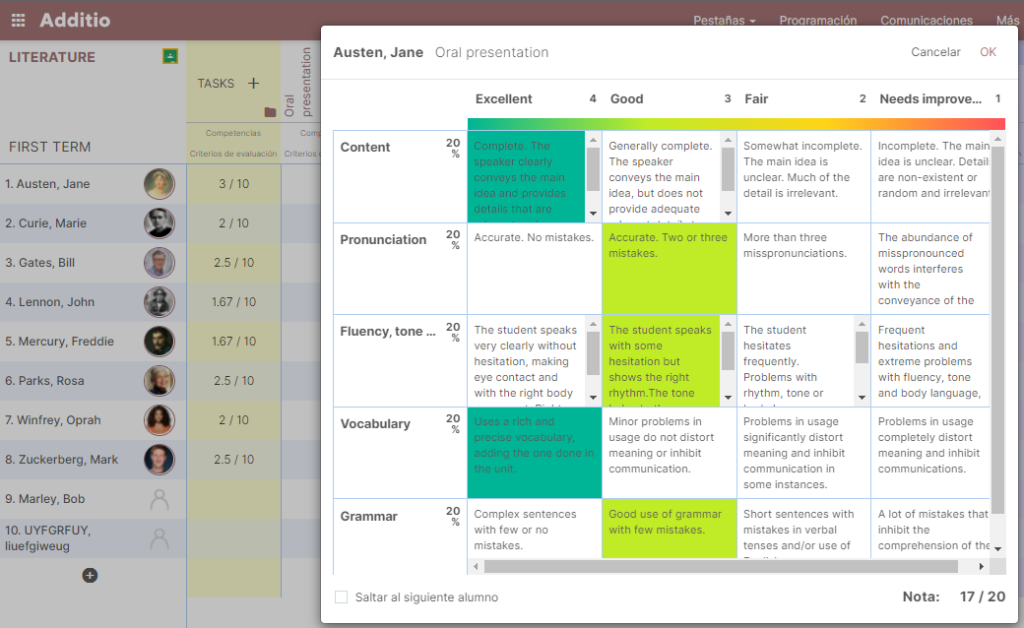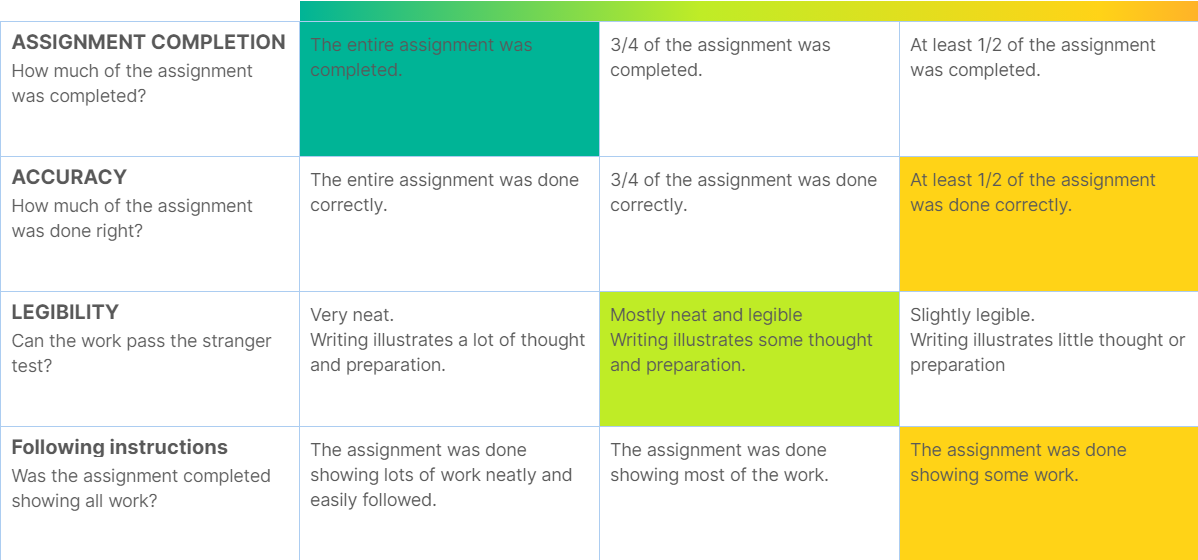Rubrics are a way to evaluate our students and help them to be participants in their own results and in turn in their learning process, thus knowing their mistakes and successes in order to improve day by day.
“The rubric itself is a document that describes different levels of quality of a task or project, giving students feedback on the development of their work during the process and a detailed evaluation of their final work” explains Rosa Liarte, History teacher at IES Eduardo Janeiro in Fuengirola (Málaga) in an interview.

Formative evaluation with rubrics
A key aspect of the rubrics is the possibility of being able to assess abstract aspects of learning, such as motivation, teamwork, argumentation skills, etc.
This way, we do not simply focus on a mark. Students must understand the reason for the result, not only the numerical value but all the aspects surrounding the final result.

How to create the perfect rubric?
The first thing to do before creating a rubric is to determine the learning objectives, i.e. what we want to obtain from our students through this activity. In the case of an oral presentation, for example, we can evaluate aspects such as the ability to express oneself, the content of the presentation, creativity, whether it has been understandable, etc.
Once we are clear about our objective, it is time to choose the aspects or items we want to assess.
In order to create a good rubric we need two main elements:
- a vertical column containing the assessment criteria for that project or task, i.e. the aspects that we want to assess in the activity
- a horizontal column with the quality grades of those criteria, which would be from a lower to a higher grade, e.g. from insufficient to excellent
Once we have created these two elements, we only need to add the meaning of each item, i.e. why we choose that note and not a lower or higher one.

Key benefits of rubric assessment
- We improve students’ perception of their learning.
- We achieve benefits in the area of evaluation, both for teachers and for the students themselves.
- They show expectations of the development of different activities in relation to different degrees of achievement.
- They allow students to monitor their own activity, self-assessing, and thus encourage the acquisition of responsibility for learning
- They can be used to give feedback to students, within the framework of formative and continuous assessment.

Self evaluation and co evaluation with rubrics
A good way for learners to develop their self-criticism and evaluation skills is through the creation of self- and co-evaluations.
In this way, learners will become able to assess themselves, analyse their work and reflect on which aspects can be improved and which have gone really well.
At the same time, it is also important that students learn to evaluate their peers from an objective point of view, using the same techniques they would use if they were evaluating themselves and making use of constructive criticism.
From Additio, you can find these two options by clicking on the option to create a new column in your notebook with the right mouse button. Find out more about how to create these two types of activities here.


